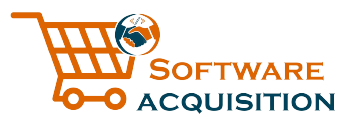Are you looking to purchase a software license? Follow this step-by-step guide to ensure a successful acquisition.
Key Takeaways:
- Identify your business needs and gather feedback from teams in your organization
- Get stakeholder buy-in and involvement by forming a technology buying committee
- Determine your budget and evaluate the total cost of ownership
- Research possible vendors and narrow down your options
- Create a short-list of vendors and demo their software choices
Identify Your Business Needs and Gather Feedback
Before purchasing a software license, it is crucial to assess your business needs and gather feedback from relevant teams within your organization. Taking the time to identify your requirements and understand the unique needs of your business will ensure that you select the most suitable software solution. Additionally, gathering feedback from teams across various departments will provide valuable insights and perspectives that can contribute to a more informed decision-making process.
Start by conducting a thorough assessment of your organization’s current processes, workflows, and pain points. What functionalities are essential to improve efficiency and productivity? Are there any specific features or integrations that your teams require to perform their tasks effectively? By involving key stakeholders and soliciting their input, you can ensure that the software solution aligns with their needs and addresses any concerns or challenges they may have.
One effective way to gather feedback is by forming a technology buying committee consisting of representatives from different departments. This committee can serve as a platform for different teams to express their requirements and concerns, enabling a more comprehensive evaluation of potential software options. By involving all relevant stakeholders, you can foster a sense of ownership and ensure that their voices are heard in the decision-making process.
Considerations for Identifying Your Business Needs:
- Assess current processes, workflows, and pain points
- Determine essential functionalities and features required
- Solicit feedback from key stakeholders and department representatives
- Form a technology buying committee to involve all relevant teams
By thoroughly identifying your business needs and gathering feedback, you lay the foundation for a successful software license purchase. This initial step sets the stage for the subsequent stages, ensuring that the software solution you ultimately select meets the specific requirements of your organization.
| Key Steps | Benefits |
|---|---|
| Assess current processes | Identify areas for improvement |
| Determine essential functionalities | Select the most suitable software |
| Solicit feedback from stakeholders | Include diverse perspectives |
| Form a buying committee | Ensure comprehensive evaluation |
Get Stakeholder Buy-In and Involvement
To ensure a smooth software license acquisition, it is essential to gain buy-in and involvement from stakeholders across your organization. By forming a technology buying committee and involving all relevant stakeholders, you can ensure that the software purchase aligns with the needs and goals of your organization.
Stakeholder buy-in and involvement play a crucial role in the success of your software license procurement. By involving key decision-makers, IT personnel, and department heads, you can gather valuable insights and perspectives that will help you make an informed decision.
One effective way to gain stakeholder buy-in is to clearly communicate the benefits and advantages of the software license. By highlighting how the software can streamline processes, improve productivity, and contribute to the overall success of the organization, you can create enthusiasm and support for the purchase.
Forming a Technology Buying Committee
Forming a technology buying committee is an excellent way to ensure that all stakeholders are involved in the decision-making process. This committee should include representatives from different departments or teams that will be directly impacted by the software. By involving individuals who have a deep understanding of the specific needs and requirements of their department, you can make a more informed decision that considers the interests of the entire organization.
During the procurement process, the technology buying committee should regularly meet to discuss and evaluate potential software options. Each member should have the opportunity to provide their input, ask questions, and express concerns. This collaborative approach will lead to a more comprehensive evaluation of software choices and an informed decision that considers the needs of all stakeholders.
| Benefits of Stakeholder Buy-In and Involvement |
|---|
| 1. Increased likelihood of selecting a software that meets the needs of all departments. |
| 2. Enhanced communication and collaboration between departments. |
| 3. Reduced resistance to change and increased acceptance of new software. |
| 4. Improved implementation process and smoother transition. |
| 5. Higher level of user adoption and satisfaction. |
By following these steps and ensuring stakeholder buy-in and involvement, you can maximize the success of your software license acquisition. The input and support of all stakeholders will contribute to a more efficient and effective procurement process, ultimately leading to improved business outcomes for your organization.
Determine Your Budget and Evaluate Total Cost of Ownership
Before proceeding with the software license purchase, it is essential to determine your budget and thoroughly evaluate the total cost of ownership. This step is crucial to ensure that you have enough funds to support the software purchase and to avoid any unexpected financial burdens down the line.
To determine your budget, start by considering the upfront costs associated with the software license. This includes the initial purchase price and any additional fees, such as installation or setup costs. Research the market to get an idea of the average cost for similar software licenses, taking into account the specific functionalities and features you require.
In addition to the upfront costs, it’s important to consider the ongoing expenses of maintaining and using the software. This includes recurring fees, such as subscription or licensing fees, as well as any necessary updates or upgrades. Evaluate how frequently the software requires updates and the associated costs.
Another aspect to consider is the potential future costs that may arise. Will there be any additional modules or add-ons you may need to purchase in the future? Are there any integration costs if you decide to integrate the software with your existing systems? By considering these factors, you can get a better understanding of the total cost of ownership and make an informed decision about the affordability of the software license.
Table: Software License Budget Breakdown
| Cost | Amount |
|---|---|
| Upfront Costs | $X |
| Ongoing Fees | $X/month |
| Potential Future Costs | $X |
| Total Budget | $X |
By carefully evaluating your budget and the total cost of ownership, you can make a more informed decision about purchasing a software license. It’s important to balance your budget constraints with your organization’s needs to ensure that the software is a valuable investment that aligns with your objectives.
Research Vendors and Narrow Down Options
To make an informed decision, comprehensive vendor research is crucial when purchasing a software license. With a multitude of options available in the market, it is essential to carefully evaluate and compare different vendors to find the one that best suits your organization’s needs and budget.
Start by asking for referrals from trusted sources, such as colleagues or industry experts who have previously purchased software licenses. Their recommendations can provide valuable insights and help you narrow down your search.
Additionally, take advantage of online resources, such as review websites and forums, to gather information and read reviews about different vendors. Look for vendors with positive feedback, reliable customer support, and a proven track record in delivering quality products.
When researching vendors, consider creating a table to compare features, pricing, and customer reviews. This will provide a visual representation of the pros and cons of each vendor, making it easier to identify the ones that align with your requirements.
| Vendor | Features | Pricing | Customer Reviews |
|---|---|---|---|
| Vendor A | Advanced reporting tools, cloud integration | $500/year | 4.5/5 |
| Vendor B | User-friendly interface, customizable modules | $700/year | 4/5 |
| Vendor C | 24/7 customer support, regular software updates | $600/year | 4.2/5 |
Once you have narrowed down your options, it is advisable to reach out to the short-listed vendors and request product demos. This will give you an opportunity to assess the software’s functionality, user-friendliness, and suitability for your organization.
Remember to involve key stakeholders during the vendor research phase. Their input and feedback can provide valuable perspectives and ensure that the final decision aligns with the needs of your organization.
Create a Short-list and Demo Software Choices
Once you have researched and narrowed down your options, it’s time to create a short-list of vendors and demo their software choices. This step is crucial as it allows you to assess the functionality, user-friendliness, and suitability of the software for your specific business needs. By demoing the software, you can gain firsthand experience and determine if it aligns with your requirements.
Start by contacting the short-listed vendors and requesting a demonstration of their software. This can be done through online meetings, webinars, or by scheduling a personalized demo. During the demo, take note of the software’s features, ease of use, and whether it meets your business objectives. Pay attention to how intuitive the interface is and how well it integrates with your existing systems.
While demoing the software, it’s important to involve key stakeholders from your organization. This allows them to provide feedback and ensures that the software meets the needs of all departments. Encourage your team to ask questions and request specific functionalities that are essential for their day-to-day operations.
After each demo, evaluate the software based on your predetermined criteria. Consider factors such as usability, scalability, customer support, and pricing. Keep track of the pros and cons of each software choice so that you can make an informed decision later on. Remember, selecting the right software is a long-term investment, so take the time to thoroughly evaluate your options.
| Vendor | Software Features | Usability | Pricing |
|---|---|---|---|
| Vendor A | Feature 1, Feature 2, Feature 3 | Excellent | $X per month |
| Vendor B | Feature 1, Feature 2, Feature 3 | Good | $Y per month |
| Vendor C | Feature 1, Feature 2, Feature 3 | Fair | $Z per month |
Make the Purchase Decision
After careful consideration and evaluation, it’s time to make the purchase decision for your software license. This step is crucial as it involves selecting the most suitable vendor that meets your requirements and aligns with your budget. To help you make an informed decision, consider the following:
- Evaluate Proposals: Review the proposals received from the short-listed vendors. Pay attention to factors such as pricing, support services, implementation timeline, and any additional features or benefits offered.
- Negotiate Terms: Don’t be afraid to negotiate with the vendor to get the best deal possible. Discuss pricing, payment terms, licensing agreements, and any customization or integration options that may be required.
- Consider Vendor Reputation: Research the reputation and track record of the vendor. Look for customer reviews, testimonials, and case studies to gain insights into their level of customer satisfaction and the quality of their software.
- Take a Test Drive: If possible, request a trial or demo version of the software to get hands-on experience. This will help you determine if the software is user-friendly, intuitive, and capable of meeting your business needs.
By carefully assessing these factors, you can confidently make the purchase decision and move forward with acquiring the software license that best suits your organization’s requirements.
Table: Vendor Comparison
| Vendor | Price | Support | Implementation Timeline | Additional Features |
|---|---|---|---|---|
| Vendor A | $X,XXX | 24/7 phone and email support | 4-6 weeks | Advanced reporting module |
| Vendor B | $X,XXX | Business hours support | 8-10 weeks | Integration with CRM system |
| Vendor C | $X,XXX | 24/7 chat and email support | 6-8 weeks | Mobile app access |
“Choosing the right vendor is a critical decision that can impact the success of your software implementation. Take the time to carefully evaluate each vendor’s proposal and negotiate terms that work best for your organization. Consider not only the price but also the level of support, implementation timeline, and any additional features that may enhance your software experience. By making an informed purchase decision, you can ensure a smooth transition and maximize the value of your software license investment.”
Monitor Success and Measure ROI
Once you have acquired the software license, it is crucial to monitor its success and measure the return on investment (ROI) to maximize its value. By analyzing the software’s performance and evaluating its impact on your business objectives, you can make informed decisions about its continued use and identify areas for improvement.
To effectively monitor the success of your software purchase, it is essential to establish key performance indicators (KPIs) that align with your business goals. These KPIs can include metrics such as increased productivity, cost savings, improved customer satisfaction, or streamlined business processes. By tracking these metrics over time, you can assess the software’s effectiveness in delivering the desired outcomes.
Measuring the ROI of your software investment involves comparing the financial benefits gained from using the software against the costs incurred, including the initial purchase price, implementation, training, and ongoing maintenance. Calculating the ROI can help you determine whether the software is generating a positive return and whether it justifies the investment.
Tracking the Success
To track the success of your software, consider implementing a comprehensive monitoring system that captures relevant data points. This can include analyzing user feedback, surveying employees, measuring system uptime and performance, and analyzing usage patterns. By regularly reviewing these metrics, you can identify any issues or areas that require attention and take proactive steps to address them.
| Metrics | How to Track |
|---|---|
| User satisfaction | Conduct user surveys or feedback sessions |
| Productivity gains | Measure overall time savings or task completion rates |
| Cost savings | Compare financial data before and after software implementation |
| System uptime | Monitor server and network logs for downtime incidents |
| Usage patterns | Analyze user logs and activity reports |
Maximizing ROI
To maximize the ROI of your software purchase, consider the following strategies:
- Regularly review and assess: Continuously evaluate the software’s performance and its alignment with your business objectives. Regularly assess whether the software is still meeting your needs and whether any updates or modifications are necessary.
- Optimize implementation: Ensure that the software is implemented properly and effectively integrated into your existing systems. Provide comprehensive training to users and offer ongoing support to address any issues that may arise.
- Stay informed about upgrades: Keep track of software updates and new features that may enhance functionality or address previous limitations. Regularly communicate with the vendor to stay informed about potential upgrades or new releases that may provide additional value.
- Leverage vendor support: Take advantage of the support and expertise offered by the software vendor. Engage with their customer support team and participate in user communities to troubleshoot any challenges and learn best practices.
By closely monitoring the success of your software purchase and striving to maximize its ROI, you can ensure that your investment continues to deliver value to your organization. Regularly reviewing key metrics, tracking user feedback, and taking proactive steps to optimize usage will help you make data-driven decisions and drive ongoing success.
Maintain Accurate Records and Work With Trusted Resellers
To ensure smooth operations and compliance, maintaining accurate records and collaborating with trusted resellers is essential when managing your software licenses. Accurate record-keeping allows you to track your licenses, stay organized, and ensure that your software is properly licensed. It also helps you comply with legal requirements and be prepared for audits or inspections.
One effective way to maintain accurate records is by using a dedicated software license management system or database. This system can help you keep track of important details such as license terms, renewal dates, and the number of licenses in use. It can also generate reports that provide a comprehensive overview of your software license inventory, making it easier to identify any gaps or areas that require attention.
| Benefits of Accurate Records: |
|---|
| 1. Ensuring compliance with software license agreements |
| 2. Optimizing your software utilization and allocation |
| 3. Reducing the risk of legal and financial penalties |
| 4. Streamlining audits and inspections |
In addition to record-keeping, it’s important to work with trusted resellers when acquiring software licenses. A trusted reseller can provide you with genuine software licenses from reputable vendors, ensuring that you receive legitimate products that comply with legal requirements. They can also offer expert advice on licensing options, helping you make informed decisions that align with your business needs and budget.
When choosing a reseller, look for established companies with a proven track record of delivering quality software licenses and excellent customer service. Consider factors such as their reputation, certifications, and testimonials from other customers. Engaging with a trusted reseller can help simplify the procurement process, mitigate risks, and ensure that you are getting the best value for your investment.
In Summary
- Maintain accurate records of your software licenses using a dedicated management system or database.
- Collaborate with trusted resellers to acquire genuine software licenses from reputable vendors.
- Benefits of maintaining accurate records include compliance, optimization, risk reduction, and streamlined audits.
- Choose resellers based on their reputation, certifications, and customer testimonials to ensure a reliable partnership.
By prioritizing accurate record-keeping and partnering with trusted resellers, you can effectively manage your software licenses, reduce risks, and optimize your software utilization for the success of your business.
Conclusion
Purchasing a software license requires careful planning and execution, and following a step-by-step guide can help ensure a successful acquisition. By identifying your business needs and gathering feedback from your teams, you can pinpoint the specific requirements and functionalities required by your organization.
Getting stakeholder buy-in and involvement is crucial to ensure a smooth decision-making process. Forming a technology buying committee and involving all relevant stakeholders will help you make informed choices and align the software purchase with your organization’s goals.
Determining your budget and evaluating the total cost of ownership is a critical step to ensure you have sufficient funds to support the software purchase. By researching vendors and narrowing down your options, you can find reputable providers that meet your requirements and fit within your budget.
Creating a short-list of potential vendors and demoing their software choices allows you to test their compatibility with your needs and assess their user-friendliness. Once you have made the purchase decision, it is important to monitor the success of the software and measure the return on investment (ROI) to ensure it aligns with your business objectives.
Furthermore, maintaining accurate records of your software licenses and working with trusted resellers is essential for proper license management. This will help you stay compliant and avoid any legal issues.
By following this step-by-step guide, you can navigate the software license purchasing process with confidence and make informed decisions that benefit your organization.
FAQ
What is the first step in purchasing a software license?
The first step is to identify your business needs and gather feedback from teams in your organization.
How can I get stakeholder buy-in and involvement?
Form a technology buying committee and involve all relevant stakeholders in the decision-making process.
How do I determine my budget for a software license purchase?
Evaluate if you have enough funds to support the software purchase and consider the total cost of ownership.
What should I consider when researching vendors?
Ask for referrals, consult online reviews, and narrow down your search based on your requirements and budget.
How do I create a short-list of vendors and demo their software choices?
Evaluate potential vendors and test their software choices to ensure they meet your specific needs.
How do I make the purchase decision?
Evaluate proposals, negotiate terms, and select the vendor that best meets your requirements.
Why is it important to monitor the success of my software purchase?
Monitoring the success allows you to measure the return on investment (ROI) and ensure alignment with business objectives.
What should I do to maintain accurate records of my licenses?
Work with a trusted reseller for purchasing software licenses and maintain proper license management.



